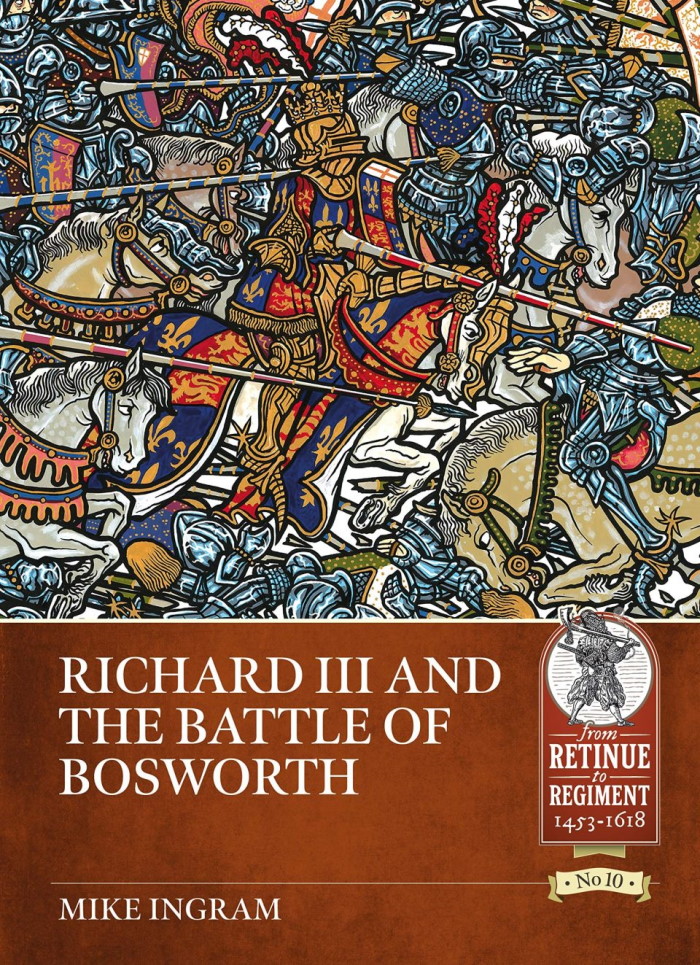
Richard III and the Battle of Bosworth (Retinue to Regiment) Paperback – October 30, 2019
by Mike Ingram (Author)
This is the story of two very different men, Richard III,
the last Plantagenet King of England, and Henry Tudor and how they met in
battle on 22 August 1485 at Bosworth Field.
The Battle of Bosworth, along with Hastings and Naseby, is
one of the most important battles in English history and, on the death of
Richard, ushered in the age of the Tudors. This book, using contemporary
sources, examines their early lives, the many plots against Richard, and the
involvement of Henry’s mother, Margaret Beaufort. It also offers a new
explanation for Richard’s execution of William Hastings. Despite recent
portrayals as the archetypal fence-sitters, the book also shows that the
powerful Stanley family had a long standing feud with Richard and were not only
complicit in the plots against him in the months before the battle, but
probably laid the trap that ultimately led to his death on the battlefield.
It shows that the events that climaxed at Bosworth were made
possible by the intrigues of King Louis XI of France and shows that it was not
just the fate of England that was at stake but that of France itself. King
Louis’ taste for intrigue and double-dealing had earned him the nicknames
“the Cunning” and “the Universal Spider.” The book details
how he spun webs of plots and conspiracies first against Edward IV then Richard
III, destabilised England, and created a platform for Henry’s invasion:
policies that were continued by his daughter, Anne de Beaujeu, after Louis
death.
This was also a time of revolution in warfare, so the book examines English and European way of war at the time and how it affected the outcome at Bosworth. Then using the latest archaeology and contemporary sources it reconstructs the last hours of Richard III, where the battle took place, and how the battle unfolded using step by step maps and an order of battle for the day. It finally looks at the aftermath of the battle and how Yorkist resistance to the new regime continued into the reign of Henry VIII.
Interview with Heritage Daily
Andy Brockman:
I think this book is also the first independent full-length study of the
battle since the work of the Battlefields Trust, Glenn Foard and others
actually relocated the battlefield site.
How has that work changed the understanding of how the
battle was fought in a tactical sense?
Mike Ingram:
The line of finds running parallel to Fenn Lane now shows exactly where
the two armies fought, which in turn shows the geography of the battle.
The discovery of this and the location of the marsh,
particularly in relation to the main battle line, allows greater understanding
not only of the course of the battle but of the approximate location of Henry
Tudor himself.
From there and by studying the landscape and sources it is
relatively simple to identify William Stanley’s location, the likely route of
Richard III’s final charge and his subsequent death.
There are also a number of other sources, such as the Ballad
of Bosworth Fielde and the Song of Lady Bessiye, which did not make any sense
when it was thought the battle was fought on Ambion Hill and were therefore
discounted.
However, the relocation of the site shows that these same
sources are now, for the most part, correct and they can now be used to give
additional detail to the narrative.
Another interesting point that this also clearly shows that,
whereas in the past, the Tudor writers have been generally been taken as read,
by comparison to the European sources, it is possible to argue that the
involvement of the French in the victory was almost entirely written out of the
narrative.